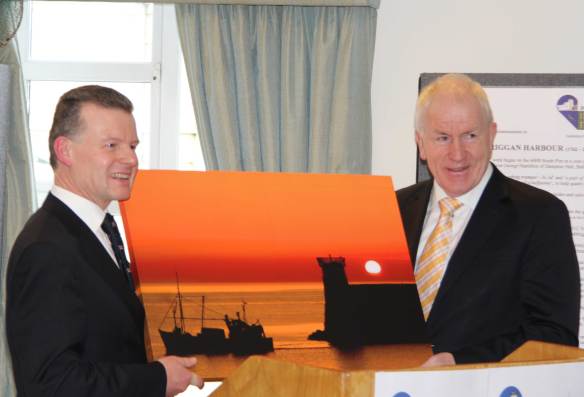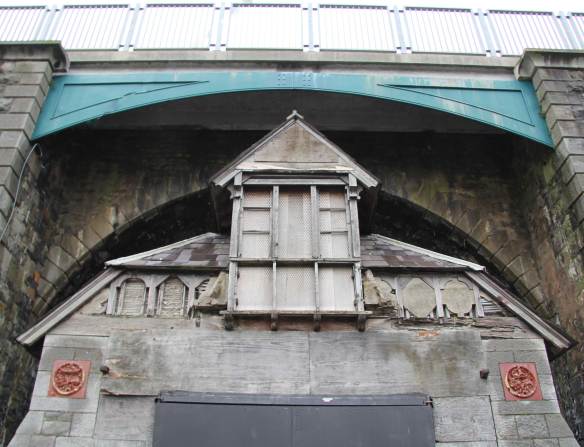Life is full of moments. This is one now and that was one then. If you walked into that Dublin hotel you could, as a non-privy spectator, have mistaken it for a wedding reception, such was the crowd. The same crowd that could confuse would also, on closer inspection, give the game away. The colours were all wrong.
Dark shades and black ties had won out. Hands were busy, holding either hot drinks or each other, offering a consoling hand on the shoulder or a hug to those who needed something more. Caffeine trumped alcohol as we talked with family and friends, reminiscing about my father, whose funeral had been that morning.
2007 had an awful lot to answer for.
With a breaking heart and a muddled brain my phone rang, and I answered it. I excused myself and confirmed it. As planned, the phone line would be connected tomorrow. No ifs or buts. And no father. He had visited the busy construction site before and we pointed out the place we believed to be ours. I hope he saw the one we meant. I know he felt our excitement.
The year could not, would not, end this way.
We finally had our keys and, after two years, couldn’t wait a minute longer to move in. Our relationship was going from strength to strength. Our subsequent desire to make a ‘grown-up’ decision was to put us in the company of thousands of others – not of developers, or investors, but of couples in love who wanted nothing more than the opportunity to turn a house into a home, our home.
In the five years that passed, it never became that to me. I couldn’t bring myself to let it.
The property crash, and the gradual realisation that we were to become a statistic in the mess and little more, led to a deep inward resentment. It goes without saying that I, like many many others, did not see the crash coming. There are plenty who will say that they did, but had they been of a certain age, means and motive, would have done similar. They now have hindsight, without the bittersweet aftertaste, and can rewrite their own personal history as they see fit.
The truth be told, we did our best to be pragmatic, making sure to stick below the €317,500 in order to avoid paying stamp duty. That additional outlay is now but a small percentage of what we owe, which will never be recouped by what we own.
Watching things pan out in a way you never expected, with each twist and turn making it painfully clear how little control we have over this situation has proven to be gut wrenching and too often, gut wrenching on a daily basis. The five-year plans of many homeowners have by this stage fallen by the wayside.
2012 was our expiration date.
Wearing the now tattered and ill-fitting clothing that is negative equity does little to compliment the outfit that is our life in 2013, and what it has become. The term ‘long-term’ has for too long held only negative connotations for me. My imagination, vivid as it is, would struggle to visualise a different property in our future, the property that would become our real house, the one that would allow for pet ownership, better amenities and a shorter commute.
Thankfully, the starting of a family, whenever that will happen and however it’ll be funded, is considered a compromise too far by both of us. There will come a point, however, when space, or the lack of it where we are, may come to play a part in that as well.
By virtue of the things this real house would allow for, it couldn’t but become a home.
Couldn’t it?
As a journalist I spend a great deal of each day being objective. My own inner newsreel does not benefit from any such objectivity, however, when thoughts of signing on the dotted line 2005 are replayed. No balance. Just bias. And let’s not forget the misplaced self-criticism at not being able to foresee what the future would hold.
In the years that have passed, life has gone on in this house. Ten birthdays and six Christmases have been celebrated here. Having never missed a mortgage payment and with two incomes (for now), we remain the lucky ones. There are those who can no longer afford their mortgage repayments, those whose homes have been effected by pyrite, and those from Priory Hall who remain in limbo.
I can only write about my reality, however, and the reality is that holding onto that five-year plan and watching it count down to zero was a waste of time and energy. When everything had changed but the self-imposed deadline which justified the purchase, simple math rendered our best intentions redundant.
It’s time for a new plan.
What is common to us all, regardless of our financial burdens – past, present, or future – is that each of us remain in possession of something that has never dropped in value, and never will.
If you’re still struggling with your New Year’s resolution for 2013 and, more importantly, if you find yourself struggling in general, adopt the one that I should have adopted in 2009 – the one that I am adopting now.
Be a better friend to yourself.
Feel the fear, do it anyway, but accept yourself – always and without condition. Be your own best friend and safeguard the only thing you will ever own that is truly priceless.
It’s time I made this house my home.








